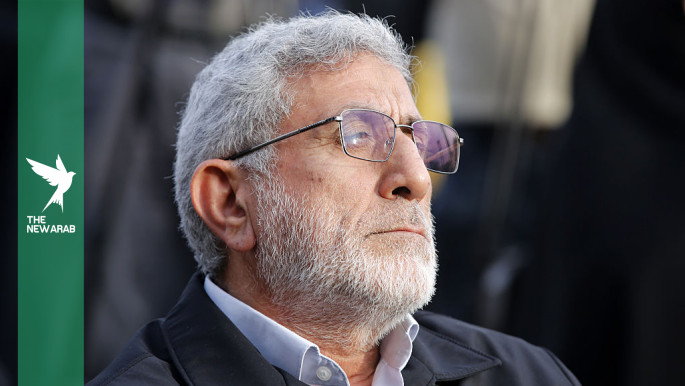Esmail Qaani is the leader of the Islamic Revolutionary Guards Corps foreign arm, the Quds Force [Fatemeh Bahrami/Anadolu via Getty Images]
The leader of the foreign arm of Iran’s Islamic Revolutionary Guards Corps (IRGC) has reportedly appeared in public at “victory” celebrations following the announcement of a ceasefire between Iran and Israel.
Esmail Qaani, the head of the Quds Force, appeared in a video shared by Iran’s Tasnim News Agency on Tuesday wearing a black baseball cap among a crowd of people in Tehran.
In another video posted by state-funded Press TV, Qanni was “warmly received by a jubilant crowd in Tehran during victory celebrations over the Zionist regime”.
Qaani had been rumoured to be killed in Israeli strikes early in the war after a report by The New York Times said he had been killed alongside other military leaders.
Several Quds Force commanders are said to have been killed by Israel, according to claims made by the Israeli military, including one who had close contact with Hamas in Gaza, another who organised region-wide weapons transfers, and a commander of drone operations.
Additionally, the head of the IRGC, Hossein Salami, was killed in the opening strikes alongside the head and deputy head of the organisation’s intelligence department.
The sighting among celebrators in Tehran comes as the Iranian regime claimed victory against Israel during the 12-day war that killed 606 Iranians, according to the country’s health ministry, as well as 28 Israelis.
Iran has said it will hold state funerals for military commanders and scientists killed in the war on Saturday, while Salami’s funeral is set for Thursday.
On Wednesday, Iran’s parliament voted to suspend cooperation with the UN’s nuclear watchdog, the International Atomic Energy Agency, until “the security of the nuclear facilities is guaranteed”, according to parliament speaker Mohammad Bagher Ghalibaf.
The elimination of Iran’s nuclear facilities was one of the war goals of Israel’s war on Tehran, with Israeli strikes later topped up by US strikes on the underground facility in Fordow, which was the most heavily fortified site in the programme, deep beneath a mountain.
A leaked intelligence assessment on the strikes published by CNN cast doubt on the extent of the damage, with officials saying that the programme was likely only set back a few months.
The report said that the strikes had not destroyed the core components of the nuclear programme, including Iran’s stockpile of enriched uranium, and that it was likely only set back a few months.
Donald Trump, however, insisted that Saturday’s strikes on Iran’s nuclear programme led to the programme’s “total obliteration” in comments made in The Hague on Wednesday.
Secretary of State Marco Rubio also asserted that Iran was “much further away from a nuclear weapon” in comments made to Politico.
The comments were affirmed by Israel’s military chief Eyal Zamir, who said: “We have delayed it by several years”, although he noted that it was too early to assess the results of the operation.
Amid the ceasefire, both the US and Iran have indicated that negotiations between the two could restart, with President Masoud Pezeshkian reportedly telling his UAE counterpart that Iran was “ready to resolve the issues… at the negotiating table”, according to state-run IRNA.
Steve Witkoff, Trump’s Middle East Envoy, told Fox News that the countries were already holding “promising” talks directly and through third parties.
“We are hopeful that we can have a long-term peace agreement that resurrects Iran,” he added.


